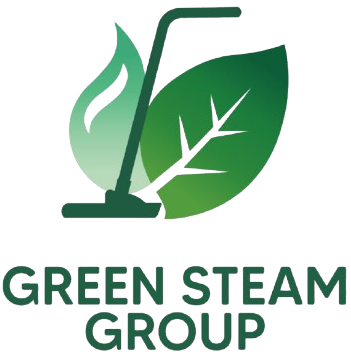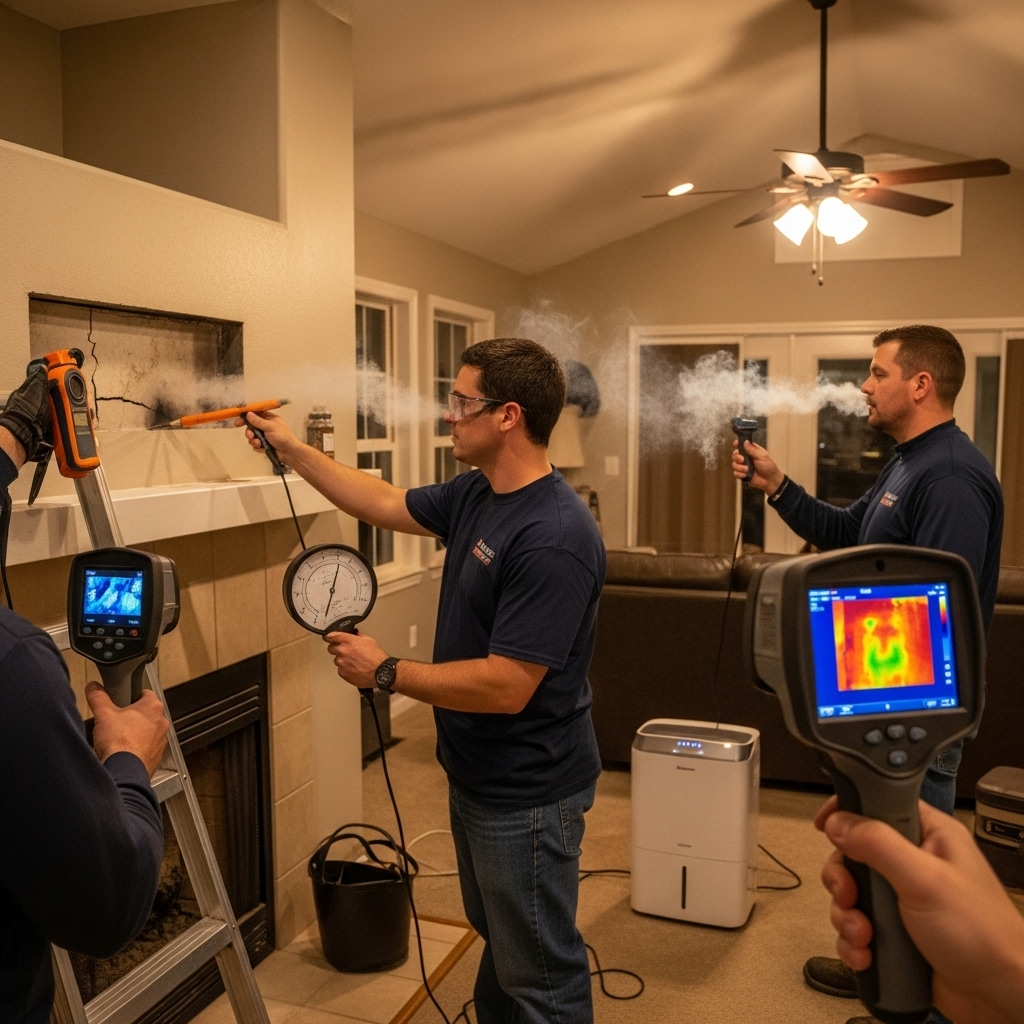Complex chimney issues rarely announce themselves clearly. Instead, they hide behind faint odors on humid days, the occasional puff of smoke, or a barely noticeable stain near the ceiling. Tampa’s climate adds another layer of complexity, with salt air accelerating corrosion and storms shifting caps and flashing. This advanced troubleshooting guide goes beyond basic sweeping to help you identify root causes, prioritize fixes, and know when specialized techniques or professional assistance are required. If you prefer a systematic solution rather than DIY experimentation, schedule expert chimney cleaning and inspection to document conditions and target the right repairs.
We’ll cover draft dynamics, moisture pathways, creosote glazing, liner failures, odor migration, and pressure imbalances—all with a Tampa focus. Use the decision trees and checklists to narrow symptoms to probable causes and corrective actions.
Reading the Clues: Symptom Mapping
Begin with a clear description of the problem, the conditions when it appears, and recent changes to the home. Many chimney issues trace back to a combination of small factors rather than one dramatic failure.
- Smoke spillage at start-up: cold flue, negative house pressure, or damper restriction.
- Intermittent smoke during steady burn: obstruction above the smoke chamber, cap clog, or fluctuating wind patterns.
- Odors on humid or rainy days: moisture interacting with deposits; open damper letting humid air cycle through the flue; leaks at crown or flashing.
- Dark stains near the ceiling or chase: flashing failure, crown cracks, or saturated masonry.
- Black, shiny deposits in the flue: creosote glazing from cool, smoldering fires or restricted draft.
Draft, Pressure, and Airflow—The Advanced View
Draft depends on temperature differential, flue height and diameter, friction (surface roughness), and the pressure balance inside your home. In tight, energy-efficient Tampa homes, exhaust appliances exert strong influence. A powerful kitchen hood can pull the house negative, reversing or stalling chimney draft. HVAC air handlers located in attics can push moist air across the chimney chase, carrying odor into living spaces. When symptoms emerge only with certain fans running, you’ve likely found a pressure interplay rather than a purely chimney-side defect.
Advanced troubleshooting involves testing under different conditions: windows cracked vs closed, HVAC on vs off, fans running vs off. A smoke pencil can reveal air movement near the fireplace opening. If draft improves with a cracked window, the home is starved for make-up air. Solutions include timed operation of exhaust fans, dedicated outside-air kits (where compatible), or simply opening a nearby window during start-up.
Moisture Diagnostics in a Coastal Climate
Moisture is Tampa’s constant companion. Water pathways include cap gaps, crown cracks, porous masonry, failed flashing, and condensation inside cool flues. Track stains vertically: if discoloration appears at the ceiling near the chimney but not at the roof penetration, condensation or a hidden chase leak may be the issue. In masonry chimneys, efflorescence (powdery white salts) indicates water movement through brick and mortar. Metal chimneys may reveal rust flakes in the firebox or at joints.
- Cap evaluation: confirm the correct mesh size, intact spark arrestor, and adequate overhang to shed water.
- Crown condition: look for hairlines that widen over time; sun and storms accelerate deterioration.
- Flashing integrity: step and counter flashing must overlap correctly, with sealant only as a secondary defense.
- Condensation control: consider insulating liners or top-sealing dampers to reduce humid air exchange in the off-season.
Creosote Glazing: Identification and Strategy
Glazed creosote is dense, hard, and shiny. It forms when cool, smoldering fires send unburned volatiles into a cold flue that reheats repeatedly. Simple brushing won’t remove it and aggressive scraping can damage liners. Advanced approaches may involve chemical treatments that modify the glaze for later removal, mechanical systems designed for glazed deposits, or staged cleanings by trained technicians. The key is to correct the root cause—usually low flue temperature or insufficient air—so new glaze doesn’t form.
Liner Defects and Sizing Issues
Mismatched liner size relative to the appliance leads to poor draft, soot accumulation, and odors. An oversized liner cools gases too fast; an undersized liner restricts flow and causes smoke spillage. Older homes in Tampa may have flue tiles with missing mortar between sections. Video inspection helps pinpoint gaps or offsets. Stainless steel reline kits can resolve multiple problems at once—sizing, continuity, and corrosion resistance—but should be chosen and installed to manufacturer specs for the connected appliance.
Odor Pathways and Off-Season Smells
The notorious summer odor problem arises when warm, humid air flows down a chimney and across creosote residues, carrying odors into living spaces. Pressure differences pull those odors through small gaps at the damper, into wall cavities, or through the fireplace face. Sealing leaks, improving the cap, and installing a top-sealing damper reduce air exchange. Deep cleaning helps, but odor mitigation also requires controlling airflow. Keep the damper closed when not in use and consider a charcoal-based absorber in the firebox during summer months.
Animal Intrusion and Debris
Birds, squirrels, and even raccoons may take interest in an uncapped or damaged chimney. Nests restrict draft and can ignite. Look for twigs and leaves on the smoke shelf, unusual noises, and down feathers or fur in the firebox. Installing a sturdy stainless cap with the correct mesh size prevents re-entry after safe removal.
Wind Effects, Roof Geometry, and Nearby Trees
Wind interacting with rooflines can create zones of high and low pressure that either assist or fight draft. If smoke issues occur primarily during strong winds from a particular direction, the cap style or chimney height may be contributing. High trees can disrupt airflow over the cap and drop debris into the screen. Solutions include changing to a wind-resistant cap design, adding height (where allowed), or trimming branches.
Advanced Diagnostic Steps
When basic checks don’t solve the problem, escalate methodically.
- Measure flue draft with a manometer under various conditions; record results.
- Use a borescope or camera to inspect the entire flue for offsets, gaps, or glaze.
- Perform a smoke test in the firebox to identify leakage points at the throat, smoke chamber, or facing.
- Thermal imaging can reveal moisture or heat transfer near the chase after a test burn.
- Dye testing the crown can confirm suspected leak paths during a controlled water application.
Decision Trees: From Symptom to Fix
Use these quick trees to target likely causes.
- Start-up smoke spillage → Preheat flue, crack a window, verify damper full open → Still spilling? Inspect for deposits and cap obstructions → Persistent? Check liner sizing and house pressure balance.
- Odors in summer → Confirm damper closed, add absorber → Inspect for deposits → Seal leakage points and consider top-sealing damper → Evaluate crown and flashing for moisture sources.
- Heavy soot despite occasional use → Verify fuel quality and burn technique → Inspect for cool flue (oversized liner, short burns) → Upgrade cap and consider insulation or relining.
Maintenance Strategies for Tampa Homes
Pair routine cleaning with climate-aware upgrades to cut down on recurring issues. Stainless components resist corrosion, crown coatings prevent water ingress, and top-sealing dampers limit humid airflow. Trim trees annually and perform a quick post-storm inspection to catch problems early. Keep a maintenance log with dates, weather events, photos, and technician notes to track patterns and verify fixes.
When to Call in Specialists
If you find glazed creosote, structural cracking, or persistent draft problems tied to home pressure, specialized tools and training are essential. Pros can stage treatments for glaze, reline a flue to proper diameter, or modify caps and heights to mitigate wind interactions. Consider scheduling professional chimney cleaning paired with a camera inspection so you have clear documentation and an actionable plan.
Frequently Asked Questions
- Is glazing common in Tampa? It occurs when short, cool burns meet a cool flue—more likely with occasional use. Humidity and airflow patterns can worsen the issue.
- Why do odors intensify after storms? Pressure changes and added moisture mobilize odors. Leaks at the crown or flashing can also introduce new moisture.
- Can I solve negative pressure with a bigger cap? A cap helps with wind effects, but negative house pressure is a building-wide issue; add make-up air or adjust exhaust fan use.
- Do metal liners last in coastal air? Quality stainless steel stands up well, especially with proper caps and regular inspections to remove salt-laden debris.
- Will a top-sealing damper stop all smells? It greatly reduces airflow but should be paired with cleaning and leak control for best results.
Move Forward with Confidence
Advanced chimney troubleshooting blends building science with practical maintenance. By mapping symptoms, testing under varied conditions, and focusing on Tampa’s climate realities, you can isolate root causes and apply solutions that last. When you’re ready for definitive answers and thorough documentation, book professional chimney cleaning and a camera-aided inspection to verify results and restore long-term performance.

